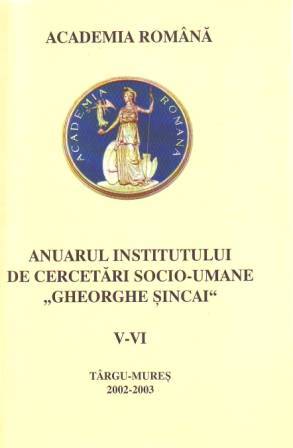A trăi ţigăneşte în concepţia istoricilor germani din secolul XVIII
Living the Gypsy Way in the Perspective of the German Historians
Author(s): Marian ZăloagăSubject(s): Cultural history
Published by: Institutul de Cercetări Socio-Umane Gheorghe Şincai al Academiei Române
Keywords: imagology; the marginal; majority and minority; 18th century; nomadic existence; identity
Summary/Abstract: It is largely acknowledged that the marginal is the most representative example in the process of the alterity. Every historical undertaking regarding this people’s destiny may at a certain point be considered the genuine imagological study, in the particular context of the Ancient Regime’s mentality. In each of them, the viewer described the Other, always keeping into account his own cultural background. The reason of such a study finds its motivation in the fact that modern historians have stressed that Gypsies culture differs from a place to another, these differences being dependent on the relation between majority and minority. The difference – the main track the discourse follows - was striking, and the observation often turns into harsh judgments. So is the case of Germans and Saxons in the 18th century. Subscribing to tradition, revealing an ethnocentric ideology, they regarded the material life of the Gypsy people, starting from their own values. The sort of prejudices involved depends mostly on the opposition between their sedentary life and Gypsies’ nomadic existence. Reflecting the Gypsies’ habitat, their costumes, their manners, etc., the observers correlate their identity to a set of values opposite and mainly superior to that of the Gypsies.
Journal: Anuarul Institutului de Cercetări Socio-Umane »Gheorghe Şincai« al Academiei Române
- Issue Year: 2003
- Issue No: 05+06
- Page Range: 190-220
- Page Count: 31
- Language: Romanian

